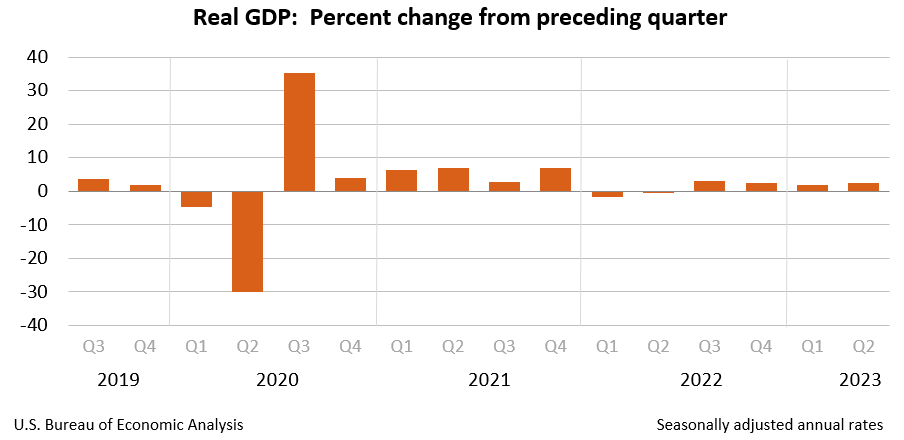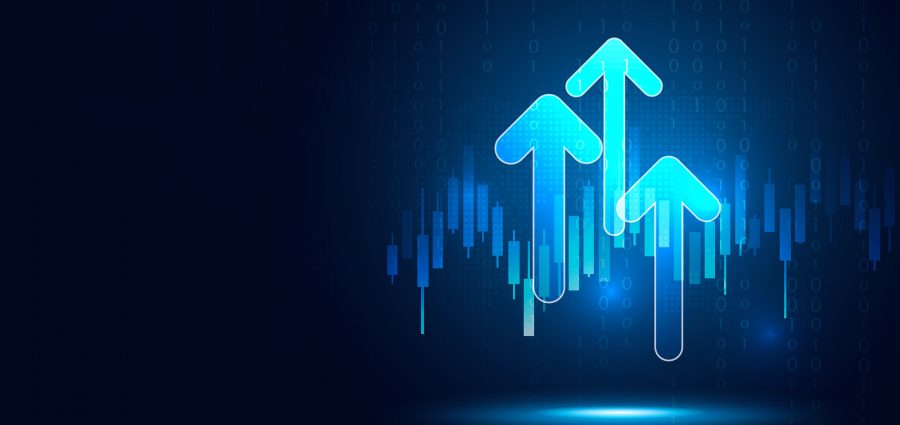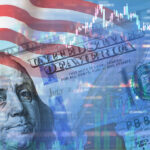Contradicting some economic sentiment that the U.S. is already in a recession, the Department of Commerce’s first report of the nation’s second quarter GDP showed that economic output accelerated in April-June 2023.
The department’s Bureau of Economic Analysis released its 2Q23 GDP Advance Estimate on July 27, which was headlined by a 2.4% growth figure for this past quarter. That outpaced the 2.0% third estimate figure for 1Q.
“The increase in real GDP reflected increases in consumer spending, nonresidential fixed investment, state and local government spending, private inventory investment and federal government spending that were partly offset by decreases in exports and residential fixed investment,” the BEA said in its GDP release, adding that imports — a subtraction in the GDP calculation — decreased.

The BEA noted that the increase in consumer spending reflected increases in both services and goods. Within services, the leading contributors to the increase were housing and utilities, health care, financial services and insurance and transportation services. Within goods, the increase was led by recreational goods and vehicles as well as gasoline and other energy goods.
According to the Bureau, the increase in nonresidential fixed investment reflected increases in equipment, structures and intellectual property products. The increase in state and local spending reflected increases in compensation of state and local government employees and gross investment in structures. The increase in private inventory investment reflected increases in both farm and nonfarm inventories.
“Compared to the first quarter, the acceleration in GDP in the second quarter primarily reflected an upturn in private inventory investment and an acceleration in nonresidential fixed investment,” the BEA said. “These movements were partly offset by a downturn in exports and decelerations in consumer spending, federal government spending and state and local government spending.”
One day earlier, the U.S. Federal Reserve issued another quarter-point interest rate hike to a range of 5.25% to 5.5% — the highest such rate range in 22 years. The inflation-curbing measure came despite considerable declines in wholesale and consumer inflation gauges in recent months.
Related Posts
-
GDP growth decelerated in 1Q due to a downturn in private inventory investment and a…
-
A new government estimate says U.S. real gross domestic product increased at an annual rate…
-
A new government estimate says U.S. real gross domestic product increased at an annual rate…





